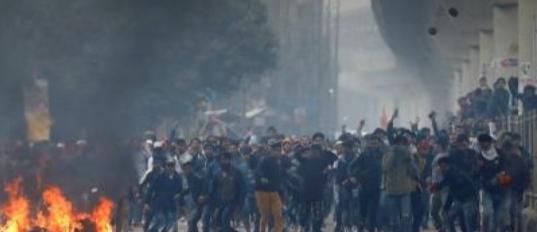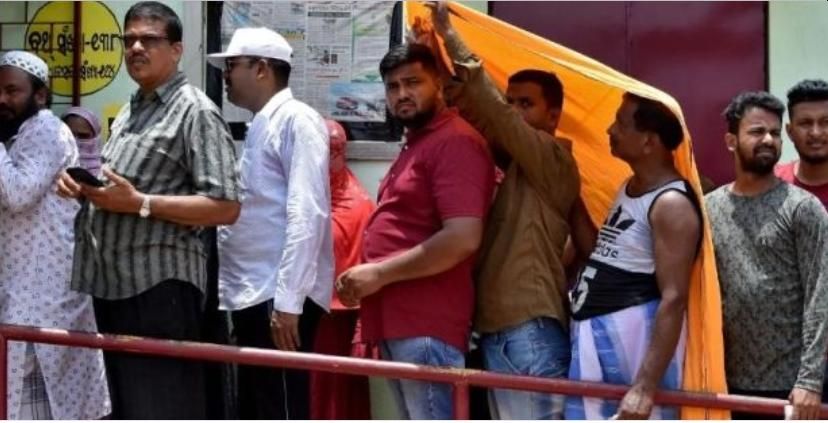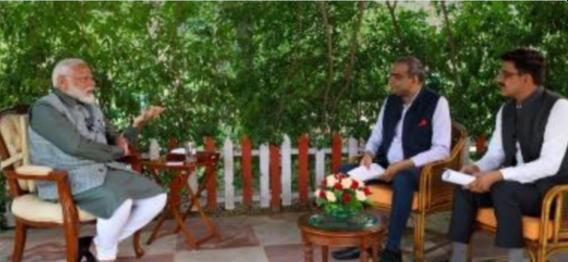By Eric Vandenbroeck and co-workers
Bharatiya Janata Party Suffer A Setback
Further to our yesterday's article, uring
his decade in office, Indian Prime Minister Narendra Modi has enjoyed a
remarkable capacity to bounce back. Failed agricultural reforms, botched
efforts to curb
communal violence, mass protests, catastrophic public health crises—none of this has dented his massive appeal or
threatened his ability to survive at the ballot box. Whatever was thrown at him, nothing stuck.

India’s national
elections began in April; in February, Modi held a 75 percent approval rating. But on Tuesday, when the
official results were released, Modi and his Bharatiya
Janata Party (BJP) faced a major setback, losing their parliamentary majority.
The party won the election but with a smaller lead than many observers—and
a bevy of exit
polls last
weekend—had predicted.

Modi boasted that the BJP-led alliance could win 400 seats of
543 in the Lok Sabha, India’s lower house; in the end, it claimed fewer than 300. The BJP’s poor showing in Uttar Pradesh was the most
stunning result. India’s most populous state is a long-standing BJP stronghold,
but the party also failed to win the most seats there.
The BJP still won the
most seats in the Lok Sabha, its vote share (about 37 percent) was similar to that of the 2019 election, and Modi is poised
to lead the government for a third straight term—a feat achieved by only one other
Indian leader,
independence hero Jawaharlal Nehru. However, the outcome of the election has
shattered the aura of invincibility around Modi, which has long defined him as
a politician.

So, what tore the
Teflon off Modi’s political skin? There are many explanations. One is economic
stress. Inflation and unemployment are still hammering India, including in
states known as BJP bastions. Another factor is a backlash against Hindu nationalism and political
repression. And in a striking role reversal, the BJP has been blamed for electoral miscalculations and the
opposition praised for its savvy tactics to strengthen its
prospects in BJP-friendly states.

Then there’s
anti-incumbency. Ten years is a long time for the same democratically elected
leader to be in power. For all his popularity, Modi may have lost some of his
shine. That makes his potential vulnerabilities—economic stress, divisive
rhetoric, autocratic tendencies—more glaring and his potential
strengths—economic growth, India’s increasing global power, his
incorruptibility—less compelling.
Devesh Kapur, a
professor at Johns Hopkins University, argues in Foreign Policy this week that
the BJP’s supremacy in India may have peaked and that coalition governments are
back to stay. “For the BJP, increasing centralization, declining intraparty
democracy, and the cutting-to-size of regional leaders who were not
subserviently loyal to national the leader all took their toll,” he writes.
The election results
don’t necessarily signal the start of Modi’s political decline. He has the
capacity to rehabilitate himself: Modi is a leader who took office in 2014 as a
global pariah (due to his alleged links to the deadly Gujarat riots in 2002) and went on
to strengthen
ties with
governments around the world, becoming one of India’s most popular leaders in
decades.

But Modi will soon
face one of his biggest tests, forming a coalition and relying on partners for
the first time. This will help determine his political trajectory. Less
political space, coupled with a smaller mandate, will make it difficult for
Modi to implement his domestic agenda, especially any controversial
Hindu-nationalist goals. Pursuing economic reforms, a politically risky tack
that he failed to achieve with a much larger mandate, will be a tall order.
Modi is more likely
to succeed with his domestic policy goals if his politics become more
conciliatory. His foreign policy should be easy enough to pursue, as his main
goals—such as strengthening India’s power abroad—are unlikely to generate
resistance from coalition partners. He won’t help his cause if he reacts to the
pressures of coalition rule by increasing crackdowns on the opposition.
Furthermore, Modi
must also deal with a revitalized opposition alliance. India’s opposition is
fractious, burdened with legal challenges, and devoid of a strong leader to
counter Modi. Yet it managed to score its biggest political achievement in a
decade. If it can maintain this momentum from the benches, Modi’s third term
could be more difficult than his first two. It could even be
his last.

The odds are that
Modi and the BJP—still massively popular—will recover. But given the challenges
of leading a coalition government and facing a stronger opposition, Modi will
more frequently find himself on the back foot.
For updates click hompage here